Recent Bitcoin price predictions for the rest of 2025 range widely, with many analysts forecasting significant gains. The consensus among a diverse group of experts, from major financial institutions to independent analysts, points to a continued bull market. These optimistic outlooks are primarily driven by the aftershocks of the halving event, sustained institutional interest via new investment products, and a favorable macroeconomic environment.
As a result, market watchers are targeting new price highs, with several forecasts suggesting a potential valuation of $150,000 to $200,000 or more by year-end. This article will break down the primary factors influencing these predictions and provide a comprehensive overview of the market landscape.
Overview
The most recent predictions for Bitcoin valuations in the remainder of 2025 are overwhelmingly bullish, with a number of experts forecasting prices in the range of $150,000 to $250,000. This is largely attributed to the post-halving supply shock, ongoing capital inflows from institutional investors through spot ETFs, and a broader shift in market sentiment. While volatility is expected, the fundamental drivers of scarcity and increasing adoption are seen as major catalysts for continued price appreciation.
Why Are Post-Halving Effects Still Impacting the Price?
The Bitcoin halving, a programmed event that occurs roughly every four years, reduces the reward for mining new blocks by 50%. The most recent halving in April 2024 cut the block reward from 6.25 BTC to 3.125 BTC, effectively shrinking the daily supply of new bitcoins entering the market. Historically, this supply shock has preceded major bull runs. In past cycles, the price of Bitcoin has experienced a period of consolidation following the halving before a significant rally takes hold within the subsequent 12 to 18 months. This pattern suggests that the full effects of the 2024 halving may not have been fully realized yet.
The principle of supply and demand is the core driver here. With a fixed supply cap of 21 million coins and a reduced rate of new issuance, any sustained or increasing demand will exert upward pressure on the price. While the immediate price action following the halving may not have been as explosive as some speculators expected, the long-term impact on supply dynamics is undeniable. The reduced issuance rate from miners has removed a constant source of selling pressure, which could lead to a more gradual but significant increase in price as the year progresses. According to some analysts, this reduced selling pressure, combined with new sources of demand, is the primary reason for the bullish long-term outlook.
What Role Do Spot ETFs and Institutional Inflows Play?
The approval and subsequent launch of spot Bitcoin ETFs in early 2024 marked a pivotal moment, transforming how institutional and retail investors can access the asset. These exchange-traded products have provided a straightforward, regulated pathway for traditional financial players—including pension funds, hedge funds, and family offices—to gain exposure to Bitcoin without the complexities of direct custody. Since their inception, these ETFs have attracted billions of dollars in new capital, demonstrating a robust and sustained demand from a previously untapped market segment.
The inflows into these investment vehicles act as a direct and measurable indicator of institutional interest. When these funds see significant net inflows, it means that the ETF providers are acquiring new Bitcoin from the open market to back the new shares, creating a powerful, consistent demand. This trend is a major factor separating the current cycle from previous ones, where price rallies were more reliant on retail speculation. The presence of institutional capital brings greater stability and credibility to the market, and some analysts believe this flow of capital will continue to be a primary catalyst for price appreciation throughout the remainder of 2025. In fact, one investment professional projected up to $150 billion in inflows by the end of 2025 from financial advisors alone, a testament to the scale of this new demand.
How Does the Broader Macroeconomic Environment Impact Bitcoin’s Valuation?
Bitcoin’s performance is not isolated from the wider financial world. Macroeconomic factors, such as inflation, interest rates, and global liquidity, can have a profound effect on its valuation. Bitcoin is often referred to as “digital gold” because of its perceived status as a hedge against inflation. During periods of high inflation or economic uncertainty, investors may seek out scarce, non-sovereign assets as a store of value. The U.S. Federal Reserve’s monetary policy, particularly decisions regarding interest rates, also plays a critical role. Lower interest rates generally encourage a “risk-on” environment, making assets like Bitcoin more attractive to investors seeking higher returns. Conversely, higher rates can dampen enthusiasm for speculative assets.
In the current environment, many analysts anticipate that global central banks may begin to shift towards more accommodative policies, which would inject more liquidity into the financial system. This additional capital often flows into risk assets, including cryptocurrencies. Furthermore, a growing number of countries and corporations are exploring or adopting Bitcoin, which could further solidify its role as a global, non-inflationary asset. The convergence of these factors—a shifting monetary policy and increasing global acceptance—creates a fertile ground for Bitcoin to continue its upward trajectory. The increasing correlation of Bitcoin with traditional tech stocks and other growth assets also means that a positive outlook for the broader market could translate into gains for Bitcoin.
Key Takeaways

- Supply Shock: The 2024 Bitcoin halving event has significantly reduced the rate of new supply, setting the stage for continued price appreciation as demand increases.
- Institutional Inflows: Spot Bitcoin ETFs are attracting billions in new capital, creating a robust and sustained source of demand that is a major difference from previous market cycles.
- Macroeconomic Tailwinds: A potential shift to more accommodative monetary policies globally could provide additional liquidity, making risk assets like Bitcoin more appealing.
- Expert Consensus: A wide range of analysts and financial firms are issuing bullish price targets for Bitcoin, with many predicting valuations between $150,000 and $250,000 by the end of 2025.
- Risk Management: Despite the bullish outlook, the market remains volatile, and investors should be prepared for price swings.
Conclusion
The remainder of 2025 presents a compelling case for a continued bullish trend in the Bitcoin market. While the path to new all-time highs will likely be volatile, the fundamental drivers are in place. The scarcity created by the halving event, coupled with a powerful new source of demand from institutional capital via spot ETFs, provides a strong foundation. Additionally, a supportive macroeconomic environment and increasing global adoption are contributing to a positive outlook. Although price predictions are not guaranteed, the confluence of these factors suggests that Bitcoin is well-positioned to achieve significant gains and potentially reach new valuation milestones by the end of the year.
FAQ
What is the general consensus on Bitcoin’s price for the rest of 2025? The general consensus is bullish. A wide range of analysts and financial institutions are predicting a continued rally, with many setting price targets between $150,000 and $250,000 by year-end.
How does the halving event affect Bitcoin’s price? The halving reduces the rate at which new bitcoins are created. This supply reduction, combined with steady or increasing demand, historically leads to significant price increases in the months following the event.
Are Bitcoin ETFs influencing the market? Yes, the launch of spot Bitcoin ETFs has brought a massive amount of new, institutional capital into the market, which is a major driver of sustained demand and a key reason for the current bullish sentiment.
What are some of the risks to these bullish predictions? Risks include unexpected regulatory crackdowns, shifts in global macroeconomic conditions that lead to a “risk-off” environment, and the potential for large-scale profit-taking by early investors.
What is a realistic long-term prediction for Bitcoin? While short-term predictions vary, the long-term outlook remains overwhelmingly positive. Many analysts believe Bitcoin could eventually reach a valuation of $500,000 to $1 million per coin in the coming years, citing its fixed supply and growing adoption as a global asset.




